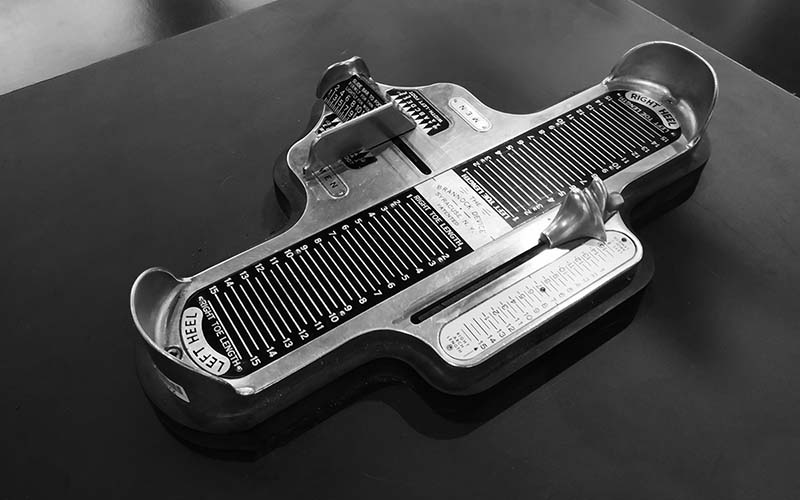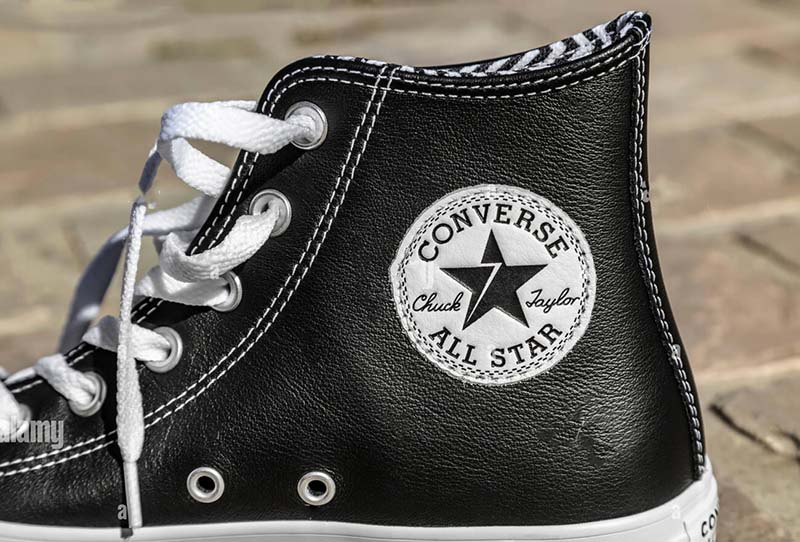The difference between men’s and women’s shoe sizes is that men and women have different foot shapes and sizes. Women’s feet tend to be narrower and longer than men’s, and they also tend to have a higher arch.
On This Page

Exploring the History of Women’s and Men’s Shoe Sizes
Welcome to the fascinating world of gender-specific shoe sizes! For centuries, shoe sizes have been divided into men’s and women’s, but why is this the case? Let’s examine the history of gender-specific shoe sizes and explore how they have evolved.
The earliest known gender-specific shoe sizes date back to the 16th century. Men’s and women’s shoes were made in different sizes at this time, with men’s shoes typically being more significant than women’s. This was because men’s feet were generally more prominent than women’s, so the sneakers needed to accommodate this difference.

In the 19th century, shoe sizes began to be standardized. This was due to the invention of the Brannock Device, a tool used to measure the length and width of a person’s foot. This allowed for more accurate sizing of shoes, and it also allowed for the creation of gender-specific shoe sizes.
Gender-specific shoe sizes are still used today, although they are more closely divided than once. Men’s and women’s shoes are now often made in the exact sizes, although there are still some differences in the way they are designed. For example, women’s shoes tend to have a narrower heel and a higher arch than men’s.
We hope you have enjoyed learning about the history of gender-specific shoe sizes. As you can see, the way we size shoes has changed over time, but the idea of gender-specific sizes has remained. So the next time you shop for shoes, you can be sure you’re getting the right size for your feet!

Examining the Anatomical Differences Between Women and Men’s Feet
Regarding the anatomy of the human foot, some differences exist between men and women. While both genders have the same basic structure, some key differences can affect how we walk, run, and stand. Let’s examine the anatomical differences between men’s and women’s feet.
The size is one of the most apparent differences between men’s and women’s feet. Generally speaking, men’s feet are more significant than women’s feet. This is because men tend to have larger bones and muscles than women. This difference in size can affect how we walk and run and the type of shoes we need to wear.
Another difference between men’s and women’s feet is the shape. Women’s feet tend to be narrower and more pointed than men’s feet. Women’s feet are designed to be more flexible and agile. This can affect how we walk and run and the type of shoes we need to wear.
Finally, there are differences in how men’s and women’s feet are structured. Women’s feet tend to have a higher arch than men’s feet. This can affect how we walk and run and the type of shoes we need to wear.
These are just a few anatomical differences between men’s and women’s feet. While these differences may seem small, they can significantly impact how we walk, run, and stand. Knowing these differences is essential to choosing the right shoes for your feet.

Investigating the Impact of Women’s and Men’s Shoe Sizes on the Fashion Industry
Welcome to our investigation into the impact of gender-specific shoe sizes on the fashion industry!
For decades, the fashion industry has been dominated by gender-specific sizing. Women’s shoes were typically smaller than men’s, and the sizes were often labeled differently. This created a barrier for many people who wanted to purchase shoes that fit their feet, regardless of gender.
However, the fashion industry has begun recognizing the need for gender-neutral sizing in recent years. This means that shoe sizes are no longer labeled as “men’s” or “women’s” but instead are labeled with a universal size. This has made it easier for people of all genders to find shoes that fit their feet.
The impact of gender-neutral sizing on the fashion industry has been significant. It has opened the market to a broader range of customers. People who may have previously been unable to find shoes that fit their feet can now easily find shoes that fit. This has resulted in an increase in sales for many shoe companies.
In addition, gender-neutral sizing has allowed for more creative designs. Companies can now create shoes that are designed to fit a variety of feet, regardless of gender. This has allowed for more innovative designs that appeal to a broader range of customers.
Finally, gender-neutral sizing has allowed for more inclusive marketing. Companies can now create campaigns that feature people of all genders wearing their shoes. This has helped to create a more inclusive and diverse fashion industry.
Overall, the impact of gender-neutral sizing on the fashion industry has been overwhelmingly positive. It has opened the market to a broader range of customers, allowed for more creative designs, and created a more inclusive and diverse industry. We hope that this trend continues and that more companies embrace gender-neutral sizing in the future.

Analyzing the Pros and Cons of Women’s and Men’s Shoe Sizes
When shopping for shoes, it can be challenging to find the perfect fit. For many people, gender-specific shoe sizes can make the process easier. But is this the best option? Let’s examine the pros and cons of gender-specific shoe sizes.
Pros
One of the most significant advantages of gender-specific shoe sizes is that they provide a more accurate fit. Men and women have different foot shapes, so having separate sizes for each gender can help ensure the shoe fits properly. This can be especially helpful for those with wide or narrow feet, as gender-specific sizes can provide a better fit than unisex sizes.
Another benefit of gender-specific shoe sizes is that they can make it easier to find the right style. Men’s and women’s shoes often have different designs, so having separate sizes can make it easier to find the right look.
Cons
One of the drawbacks of gender-specific shoe sizes is that they can be limiting. If you’re looking for a particular shoe style, you may not be able to find it in your size if it’s only available in one gender’s size. This can be incredibly frustrating if you’re looking for a unisex style.
Another potential downside of gender-specific shoe sizes is that they can be confusing. If you’re used to unisex sizes, it can be challenging to figure out which size you need in a gender-specific size. This can make it challenging to find the right fit.
Summary
Gender-specific shoe sizes can be an excellent option for those looking for a more accurate fit. However, they can also be limiting and confusing. Ultimately, it’s up to you to decide if gender-specific sizes are the right choice for you.
Conclusion
In conclusion, the difference between men’s and women’s shoe sizes is due to the fact that men and women have different foot shapes and sizes. Women’s feet tend to be narrower and longer than men’s, and they also tend to have a higher arch. This difference in foot shape and size is why men’s and women’s shoe sizes are different.

